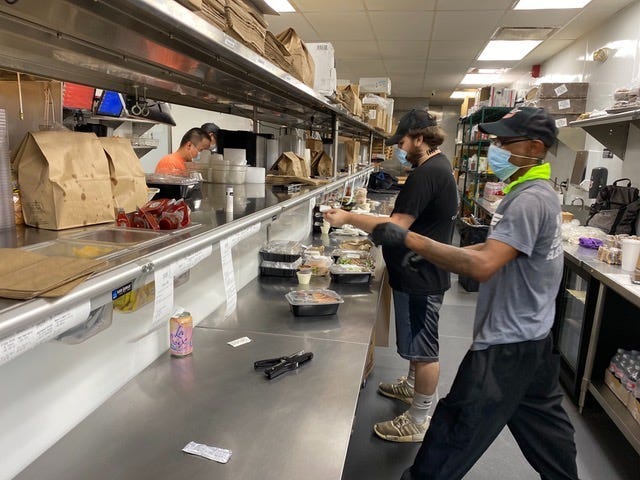
ClusterTruck
- Ghost kitchen pioneer ClusterTruck is paying its delivery drivers up to $88,000 a year.
- To support those wages, the Indiana-based company does not use a third-party delivery model.
- It also never oversaturates the driver pool, which aims to ensure they are making enough money.
Ghost kitchens, which are used for delivery-only restaurant services, became hugely popular at the start of the pandemic. Now, more than 18 months later, they've maintained their presence, despite the reopening of many dining rooms.
According to market research firm Euromonitor, the ghost kitchen industry could be worth $1 trillion by 2030.
One of the main drivers of growth in the industry is the changing cost structures of the foodservice market.
Ghost kitchens' delivery-focused model allows businesses to significantly cut down on rent and staffing costs by employing fewer people. In the case of ClusterTruck, which is based in Indianapolis, Indiana, its delivery drivers' happiness is integral to its success.
"Drivers are our core constituency at ClusterTruck," its chief operating officer Brian Howenstein told Insider.
He said ClusterTruck is vertically integrated, meaning it manages the entire process - from cooking up orders made by in-house chefs to using its own delivery drivers.
The company's use of its own delivery fleet is particularly notable. According to Howenstein, all delivery drivers are gig drivers contracted to ClusterTruck, rather than through a third-party delivery service like Deliveroo or Uber Eats.
Their jobs are assigned on an on-demand basis. "If a courier decides they want to start delivering for ClusterTruck, they can go into the app and hit 'I'm available.' "As soon as we have demand, we'll send them a notification and they'll start heading to our kitchen to start delivering," Howenstein said.
The company tries to manage demand to make sure it never brings on too many drivers. "To make our system work, we have to make sure our drivers are happy and that they're making enough money," Howenstein said.
The company works to never oversaturate its driver pool. "If we have 100 orders, we may only bring on 20 or so drivers to deliver those," Howenstein said. "We want to make sure each driver makes enough money to be happy and that it's a good gig for them financially.
Such a structure has allowed the company to pay drivers no less than $15 per hour. In many cases, however, they can make more than $80,000 per year, as a result of the on-demand business model. Insider has viewed documentation provided by ClusterTruck showing the payment of such salaries.
Those higher salaries are dependent on the number of jobs couriers get assigned per hour. "We keep their utilization really high, which is where they really start to make money," Howenstein said.
CEO Chris Baggott told Insider the company can provide its drivers with between four and six jobs per hour. "An Uber or a DoorDash driver is lucky to get 1.2 to 1.3 jobs per hour," he said.
"Our goal was, let's take the worst job in the gig economy, which is delivering prepared food, and let's make it the best," Baggott added. "We truly treat them like our front of house. They are the face of our company."
ClusterTruck also differentiates itself from competitors with its no-fees structure, all while making a profit. Howenstein said the company can support this model because it saves costs on non-essential services.
Howenstein said: "We have no wait staff and we are able to exist in rents that are not high-dollar real estates because customers aren't coming to us, we're coming to them."
According to Howenstein, 95% of the ghost kitchen industry is still based on the third-party delivery model, and the economics of it, in his opinion, are fundamentally broken and unprofitable.
Looking ahead, he said the biggest thing he'll watch out for is whether ClusterTruck's competitors are profitable without being untenably priced for customers.